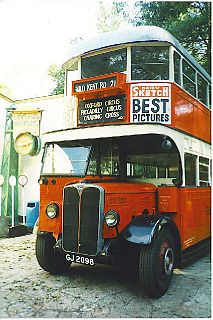Related Research Articles
The General Electric Company, or GEC, was a major British industrial conglomerate involved in consumer and defence electronics, communications, and engineering. The company was founded in 1886, was Britain's largest private employer with over 250,000 employees in the 1980s, and at its peak in the 1990s, made profits of over £1 billion a year.

The English Electric Company Limited (EE) was a British industrial manufacturer formed after the armistice of World War I by amalgamating five businesses which, during the war, had been making munitions, armaments and aeroplanes.
Brush Traction is a manufacturer and maintainer of railway locomotives in Loughborough, England. It is a subsidiary of Wabtec.

British Electric Traction Company Limited, renamed BET plc in 1985, was a large British industrial conglomerate. It was once a constituent of the FTSE 100 Index but was acquired by Rentokil in 1996, and the merged company is now known as Rentokil Initial.

Midland Red was a bus company that operated in The Midlands from 1905 until 1981. It was one of the largest English bus companies, operating over a large area between Gloucester in the south and Derbyshire in the north, and from Northampton to the Welsh border. The company also manufactured buses.

The National Bus Company (NBC) was a nationalised bus company that operated in England and Wales between 1969 and 1988. NBC did not run buses itself, but was the owner of a number of regional subsidiary bus operating companies.
Dick, Kerr and Company was a locomotive and tramcar manufacturer based in Kilmarnock, Scotland and Preston, England.
The City of Birmingham Tramways Company Ltd operated trams in Birmingham, England, from 1896 until 1911.
Metropolitan Electric Tramways Limited (MET) operated electric tram services in suburban areas of Middlesex and Hertfordshire from 1904 to 1933, when its services passed to the London Passenger Transport Board.
The Mexborough and Swinton Traction Company was the name adopted by the Mexborough & Swinton Tramways Company in 1929 following the introduction of trolleybuses on all its routes. It operated in the West Riding of Yorkshire, England, over routes serving Manvers Main Colliery, Wath upon Dearne and the towns of Rotherham, Rawmarsh, Swinton, Mexborough, Conisbrough and the estate at Conanby.

The Connecticut Company was the primary electric street railway company in the U.S. state of Connecticut, operating both city and rural trolleys and freight service. It was controlled by the New York, New Haven and Hartford Railroad, which also controlled most steam railroads in the state. After 1936, when one of its major leases was dissolved, it continued operating streetcars and, increasingly, buses in certain Connecticut cities until 1976, when its assets were purchased by the state government.
Moritz Immisch was an Electrical engineer, watchmaker and inventor.

The Tilling Group was one of two conglomerates that controlled almost all of the major bus operators in the United Kingdom between World Wars I and II and until nationalisation in 1948.

Coventry Corporation Tramways operated a tramway service in Coventry, England, between 1912 and 1940.

The Cavehill and Whitewell Tramway operated steam powered, then horse drawn and finally electric tramway services between Cavehill and Whitewell in Belfast, Ireland between 1882 and 1911. It was subsumed into Belfast Corporation Tramways.
The Dudley and Stourbridge Steam Tramways Company operated a steam tramway service between Dudley and Stourbridge between 1884 and 1899.
Worcester Tramways Company and its predecessors operated a horse-drawn tramway service in Worcester between 1881 and 1902.
The Hartlepool Electric Tramways operated a tramway service in Hartlepool between 1899 and 1927.
Llanelly and District Electric Tramways operated a standard gauge tramway service in Llanelli, Wales, between 1908 and 1933. It was the successor to a 3 ft gauge horse tramway, which ran from 1882 until 1908. A complex series of negotiations took place in the early 1900s, resulting in the horse tramway being converted to an electric tramway. Standard gauge horse trams were run initially, until the company completed North Dock power station, which supplied electricity to the tramway. Two of the employees who worked on the construction went on to found Balfour Beatty.
The Provincial Tramways Company was a holding company for horse tramway companies in various regional towns of England. It was floated in July 1872 by means of a prospectus inviting public subscription for shares in the new company. The published prospectus lists the towns where it was proposed to operate horse tramways as Plymouth. Cardiff, Dundee. Portsmouth. Southampton and Tynemouth. Initially those in Plymouth and Cardiff were constructed and in operation as reported to the half yearly meeting of the company in 1873.
References
- ↑ The London Gazette, Friday 9 January 1998. 55010. Notice Code 2432